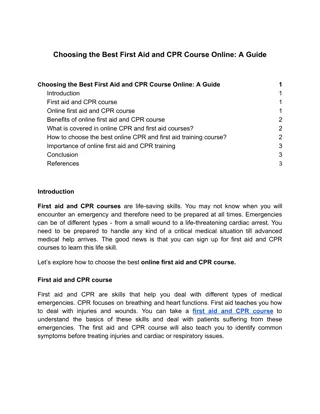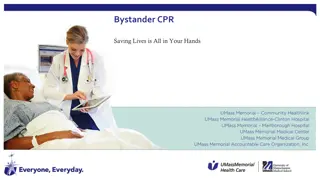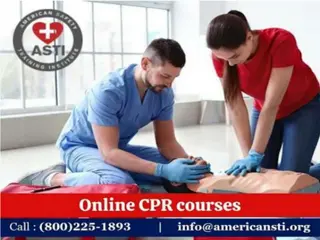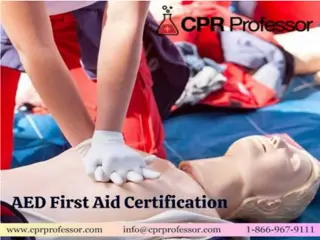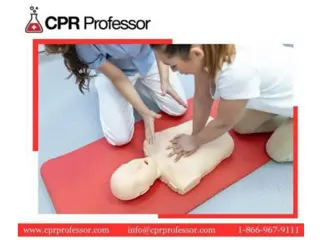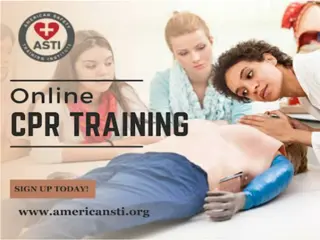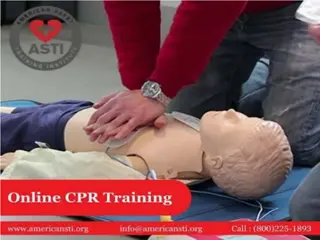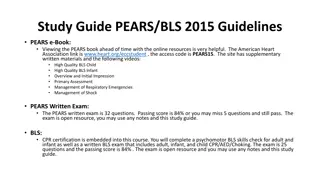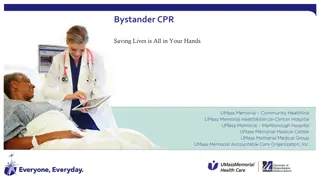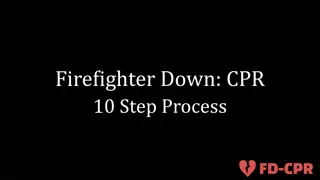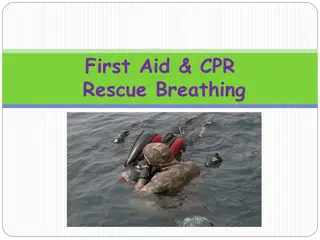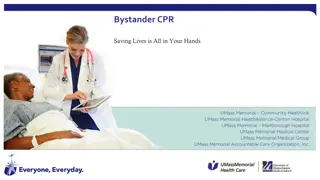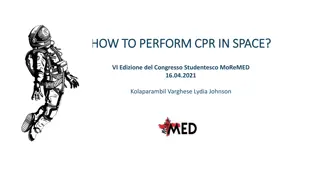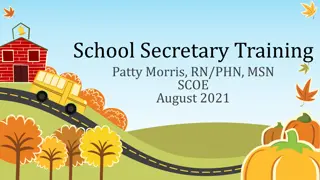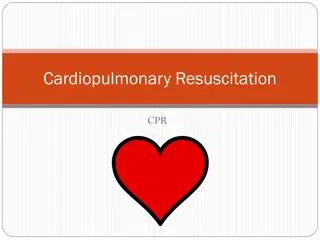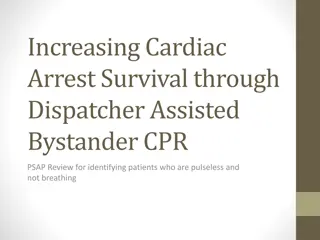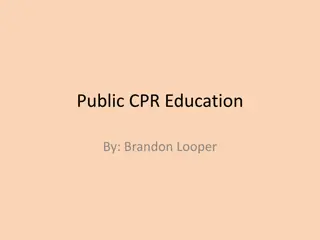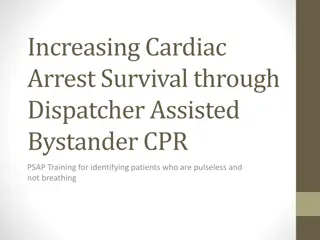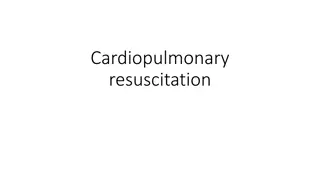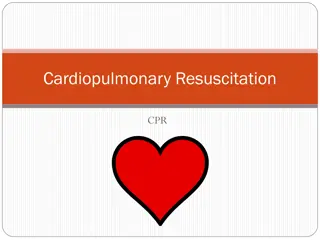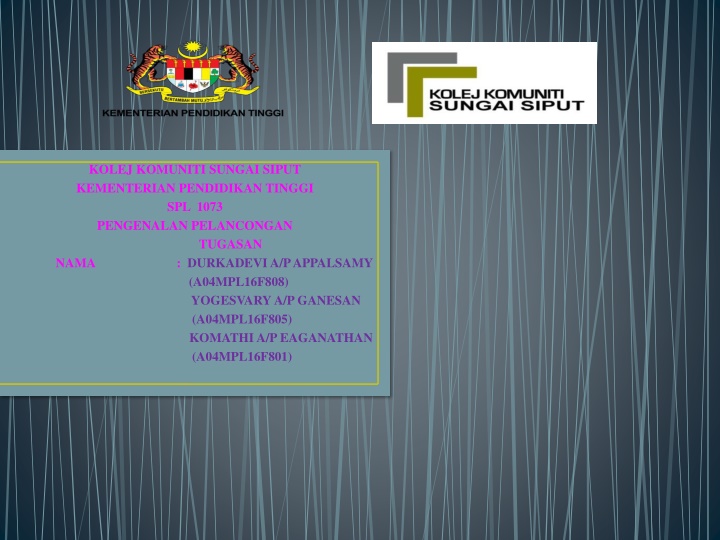
Performing Adult CPR: Step-by-Step Guide and Tips
Learn how to perform CPR on an adult effectively through a detailed step-by-step guide. Find out how to assess the situation, check for consciousness, call for help, and more. Proper CPR knowledge can potentially save a life in emergency situations.
Download Presentation

Please find below an Image/Link to download the presentation.
The content on the website is provided AS IS for your information and personal use only. It may not be sold, licensed, or shared on other websites without obtaining consent from the author. If you encounter any issues during the download, it is possible that the publisher has removed the file from their server.
You are allowed to download the files provided on this website for personal or commercial use, subject to the condition that they are used lawfully. All files are the property of their respective owners.
The content on the website is provided AS IS for your information and personal use only. It may not be sold, licensed, or shared on other websites without obtaining consent from the author.
E N D
Presentation Transcript
KOLEJ KOMUNITI SUNGAI SIPUT KEMENTERIAN PENDIDIKAN TINGGI SPL 1073 PENGENALAN PELANCONGAN TUGASAN NAMA : DURKADEVI A/P APPALSAMY (A04MPL16F808) YOGESVARY A/P GANESAN (A04MPL16F805) KOMATHI A/P EAGANATHAN (A04MPL16F801)
How to Do CPR on an Adult How to Do CPR on an Adult Knowing how to perform both methods of CPR (cardiopulmonary resuscitation) on an adult could save a life. However, the recommended method for performing CPR has changed relatively recently, and it is important to know the difference
1 CHECK THE SCENE FOR IMMEDIATE DANGER FIRST STEP,Make sure you're not putting yourself in harm's way by administering CPR to someone unconscious. Is there a fire? Is the person lying on a roadway? Do whatever is necessary to move yourself and the other person to safety.
2 ASSESS THE VICTIM'S CONSCIOUSNESS. ASSESS THE VICTIM'S CONSCIOUSNESS. THEN,Gently tap his or her shoulder and ask "Are you OK?" in a loud, clear voice. If he or she responds agreement "Yeah" or such, CPR is not required. Instead, undertake basic first aid and take measures to prevent or treat shock[1], and assess whether you need to contact emergency services.
3. 3.Send for help NEXT,The more people available for this step, the better. However, it can be done alone. Send someone to call for emergency medical services (EMS).To contact emergency services, call Give the dispatcher your location, and notify him or her that you're going to perform CPR. If you're alone, get off the phone and start compressions after that. If you have someone else with you, have him or her stay on the line while you do CPR on the victim.
4 Do 4 Do not check for a pulse. not check for a pulse. Unless you're a trained medical professional, odds are you'll spend too much valuable time looking for a pulse when you should be doing compressions.
5 Check 5 Check for breathing. for breathing. And, make sure that the airway is not blocked. If the mouth is closed, press with your thumb and forefinger on both cheeks at the end of the teeth and then look inside. Remove any visible obstacle that is in your reach but never push your fingers inside too far. Put your ear close to the victim's nose and mouth, and listen for slight breathing.
6 .THEN, Place 6 .THEN, Place your second hand on top of the first your second hand on top of the first palms palms- -down, interlock the fingers of the second hand down, interlock the fingers of the second hand between the first. between the first. hand hand, ,
7 . Position 7 . Position your body directly over your hands, so that your your body directly over your hands, so that your arms are straight and somewhat rigid arms are straight and somewhat rigid Don't flex the arms to push, but sort of lock your elbows, and use your upper body strength to push.
8 . Perform 8 . Perform 30 chest compressions. 30 chest compressions. Press down with both hands directly over the breastbone to perform a compression, which helps the heart beat. Chest compressions are more critical for correcting abnormal heart rhythms (ventricular fibrillation or pulseless ventricular tachycardia, heart rapidly quivering instead of beating).
9 Make 9 Make sure the airway is open. sure the airway is open. Place your hand on the victim's forehead and two fingers on their chin and tilt the head back to open the airway.
10 . Give 10 . Give two rescue breaths (optional). two rescue breaths (optional). The American Heart Association no longer considers rescue breaths necessary for CPR, as the chest compressions are more important. If you are trained in CPR and totally confident, give two rescue breaths after your 30 chest compressions. If you've never done CPR before, or you're trained but rusty, stick with only chest compressions.
11 . Repeat 11 . Repeat the cycle of 30 chest compressions the cycle of 30 chest compressions If you're also doing rescue breaths, keep doing a cycle of 30 chest compressions, and then 2 rescue breaths; repeat the 30 compressions and 2 more breaths.
Continue CPR until someone takes over for you, emergency personnel arrive, you are too exhausted to continue, an automated external defibrillator (AED) is available for immediate use, or signs of life return.

